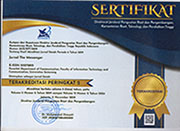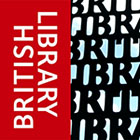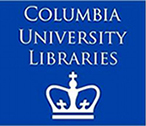Understanding the Meaning of Self-Identity Construction of Salatiga Community
Abstract
Keywords
Full Text:
PDFReferences
Barker, C. (2011). Cultural Studies: Teori dan Praktik, edisi terjemahan oleh Nurhadi. Yogyakarta: Jalasutra.
Berger, P. L., & Luckmann, T. (1990). Tafsir Sosial atas Kenyataan: Risalah tentang Sosiologi Pengetahuan, terj. Hasan Basari. Jakarta: LP3ES.
Books, O., Peter, B. Y., & Berger, P. L. (1967). Elements of a Sociological Theory of Religion. New York: Anchor Books.
Brewer, J. (2000). Ethnography. In S. Becker, A. Bryman, & H. Ferguson (Eds.), Understanding Research for Social Policy and Social Work. Berkshire: McGraw-Hill Education.
Budaya Nusantara. (2017). Kirab Budaya Merti Desa Kenteng Salatiga - 05 Nopember 2017 #1. Retrieved July 21, 2019, from 22 December 2017 website: www.youtube.com/watch?v=4p9_waET_6c
Castells, M. (2011). The power of identity (Vol. 14). John Wiley & Sons.
Creswell, J. W. (2013). Research Design: Pendekatan Kualitatif, Kuantitatif, dan Mix (3rd ed.). Yogyakarta: Pustaka Pelajar.
Dhave, D. (2012). Salatiga, Nostalgia Masa Lalu Bersama Bangunan Tua.
Febriana, K. A., Setiawan, Y. B., & Ersyad, F. A. (2019). Warak Ngendhog Commodification as a Kind of Creative Industry in Semarang City. Jurnal The Messenger, 11(1), 27. https://doi.org/10.26623/themessenger.v11i1.925
Joseph, S. (1993). Identity, Culture and Community. Economic and Political Weekly, 807 809.
Lawler, S. (2005). Introduction: Class, culture and identity. Sage Publications London, Thousand Oaks, New Delhi.
Littlejohn, S. W., & Foss, K. A. (2009). Teori Komunikasi. Jakarta: Salemba Humanika.
Madibbo, A. I. (2012). Conflict and the conceptions of identities in the Sudan. Current Sociology, 60(3), 302 319.
Malik, A. (2018). Cultural Identity and Social Interaction of Indigenous Peoples in the Middle of Modernization (Case Study of Indigenous Peoples of Kasepuhan Banten Kidul). Jurnal The Messenger, 10(1), 34. https://doi.org/10.26623/themessenger.v10i1.649
Mangadeg, Y. (1988). Pangeran Sambernyawa, Ringkasan Sejarah Perjuangannya. Surakarta: Yayasan Mangadeg.
Martin, J., & Nakayama, T. (2010). Intercultural Communication In Contexts (5th ed.). New York: McGraw-Hill.
McDaniel, E. R., Samovar, L. A., & Porter, R. E. (2012). Intercultural communication: A reader. Wadsworth.
Mulyana, D. (2008). Ilmu Komunikasi: Suatu Pengantar. Bandung: PT. Remaja Rosdakarya.
Nugroho, H., & Suryo, D. (2013). Konstruksi identitas kepapuaan dalam dinamika arus demokrasi.
Paramita, S., Carissa, R. M., & Tarumanagara, U. (2018). Inter-Ethnic Communication Barriers in Pontianak City Hambatan Komunikasi antar Etnis di Kota Pontianak. Jurnal The Messenger, 10(1), 54 62. https://doi.org/10.26623/themessenger.v10i1.550
Pemerintah Kota Salatiga. (2017). Sejarah Kota. Retrieved August 25, 2017, from 1 January 2017 website: http://www.salatigakota.go.id/TentangSejarah.php
Philipsen, G. (1992). Speaking culturally: Explorations in social communication. SUNY Press.
Rakhmat, J. (2005). Psikologi Komunikasi edisi revisi. Bandung: Remaja Rosdakarya.
Roosens, E. E. (1989). Creating ethnicity: The process of ethnogenesis. Frontiers of Anthropology, 5. Retrieved from https://psycnet.apa.org/record/1989-98740-000
Samovar, L. A., Porter, R. E., Mcdaniel, E. R., & Roy, C. S. (2014). Communication Between Cultures (8th ed.). Boston: Wadsworth, Cengage Learning.
Samovar, L. A., Porter, R. E., McDaniel, E. R., & Roy, C. S. (2014). Intercultural communication: A reader. Cengage Learning.
Soeprapto, R. (2002). Interaksionisme Simbolik Perspektif Sosiologi Modern. Yogyakarta: Averroes Press dan Pustaka Pelajar.
Supangkat, E. (2010). Galeria Salatiga. Griya Media.
Yuli, S. (2018, December 8). Salatiga Kota Paling Toleran Kedua. 08 December 2018. Retrieved from https://www.suaramerdeka.com/index.php/smcetak/baca/151430/salatiga-kota-paling-toleran-kedua
DOI: http://dx.doi.org/10.26623/themessenger.v11i2.1273
Refbacks
- There are currently no refbacks.
Copyright (c) 2019 Jurnal The Messenger
View My Stats [Jurnal The Messenger] is an International Scientific Journal, Published by the Department of Communication, Faculty of Information Technology and Communication, Universitas Semarang (Central Java, Indonesia). It is licensed under a Creative Commons Attribution 4.0 International License.



_11.jpg)




_BARCODE.jpg)
_BARCODE1.jpg)


5.png)










2.png)





